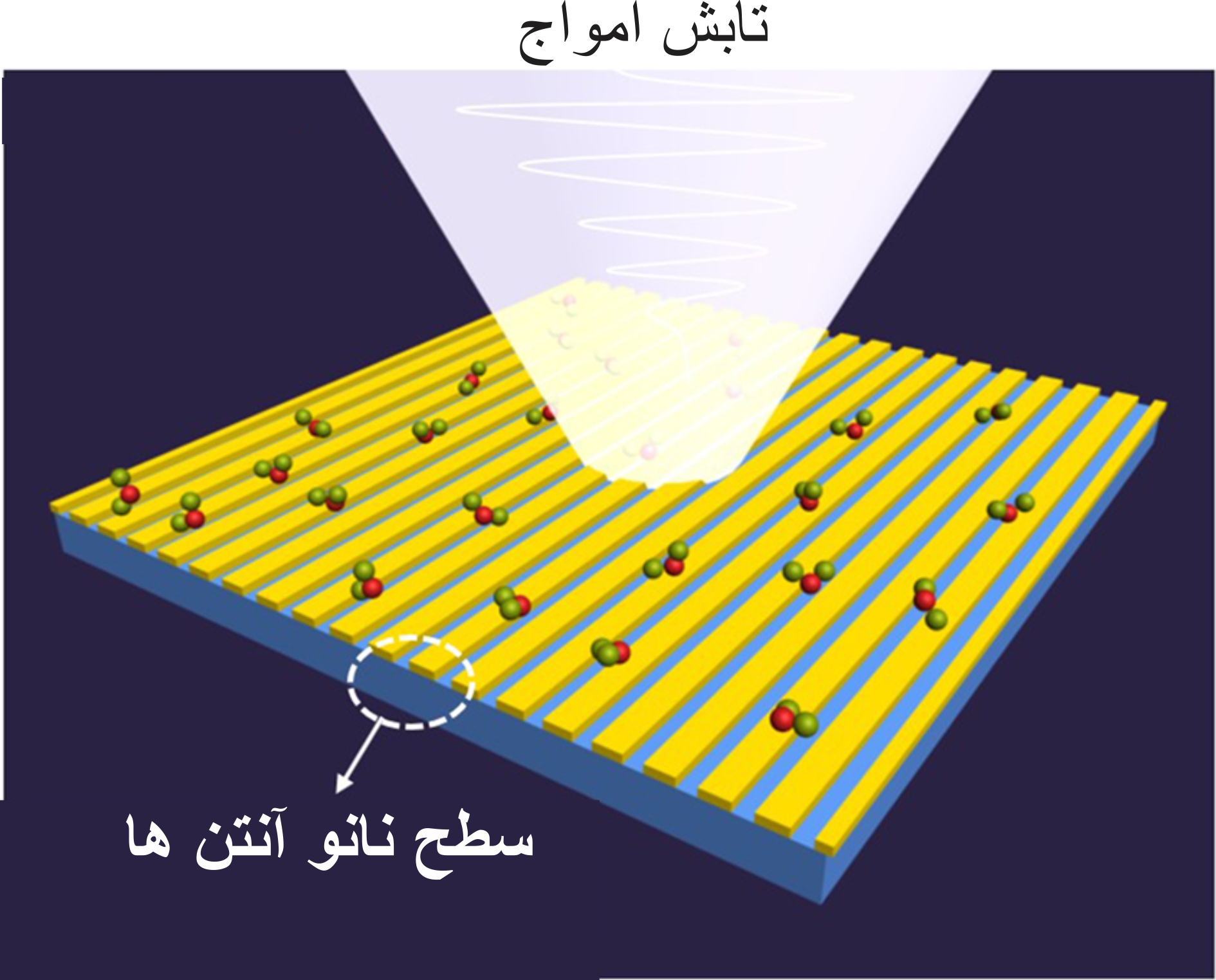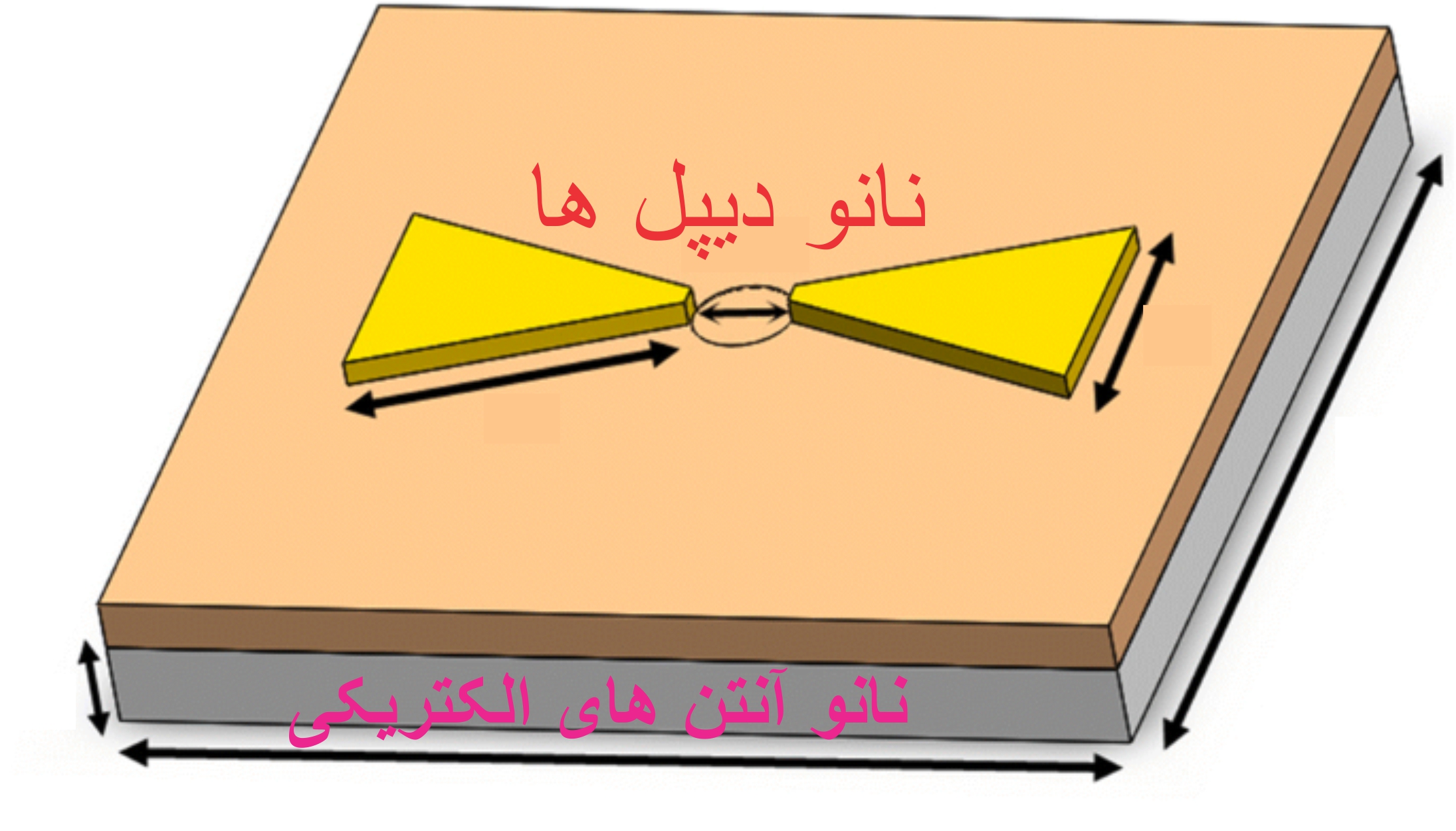Department of nano-micro-antennas and nano-electromagnetic waves (Nano-Micro-Antena)
Rectenna system micro antennas
Researcher and author: Dr. ( Afshin Rashid)
Note: Since nano-antennas have the ability to absorb a wide angle, even in the case of oblique solar radiation to the surface of the solar panel, their efficiency is maintained to a significant extent. This system can also absorb the energy radiated from the earth, that is, the earth's radiation, which is caused by the sun's daily radiation to the earth's surface and occurs in wavelengths of 10 micrometers , i.e. frequencies of about 90 terahertz.
For this reason, the nano-antennas of the Rectna solar system can produce electrical energy by collecting these radiations during the night or in bad weather conditions . Currently, the diode and antenna structures used in solar rectenna are made using the electronic pattern method. Although this construction method is expensive and time-consuming to produce in laboratory and research scales , but if these structures are produced in a large volume and with a suitable method , they reduce the cost and speed of the construction process. When the solar electromagnetic wave hits the surface of the nano-antenna, a time-varying current is created on the surface of the nano-antenna, and as a result, a voltage is produced at the place of its power gap.
A dipole antenna with linear polarization and 2/λ length, which has a relative bandwidth of 11%, will be able to collect about 75.2 pW. For this reason, if using an antenna with double polarization, a power of 5.5 pW will be obtained. Due to the low receiving power of each independent antenna, it is customary to use anti-arrays in this cell, which has its own rules and methods. An antenna is a device that can receive electromagnetic waves in space. To receive electromagnetic waves Solar radiation by antenna should be in the order of the size of the incoming wavelength to its surface, so in order to receive solar radiation that includes wavelengths in the infrared, visible and ultraviolet regions, an antenna with nanometer dimensions is needed. Since the use of Optical nanoantennas for solar energy harvesting provide a practical solution with high efficiency compared to other common photovoltaic technologies such as solar panels, leading to rapid development in Nano industry and optical materials. When the solar electromagnetic wave hits the surface of the nanoantenna, a time-varying current is created on the surface of the nanoantenna, and as a result, a voltage is produced at the feeding gap. Hence, by placing a suitable Rectifying Antenna at the feeding gap of the nanoantenna, The desired DC power is produced. In the solar rectenna system, millions of nano antennas are placed next to each other with a suitable rectifier, and each of them produces electric energy using sunlight. The antenna is absorbed by a suitable rectifier. Suitable diodes for this frequency range are 12 MIMs. Since nano antennas have the ability to absorb a wide angle, even in the case of oblique solar radiation to the surface of the solar panel, their efficiency is up toA significant limit is maintained. This system can also absorb the energy radiated from the earth, that is, terrestrial radiation that is caused by the daily radiation of the sun to the surface of the earth and occurs in wavelengths of 10 micrometers, i.e. frequencies of about 90 terahertz, for this reason The nanoantennas of the solar system can produce electrical energy by collecting these radiations during the night or in bad weather conditions .
Conclusion :
The combination of optical antennas along with a suitable rectifier system, which is called Rectenna for short. And it is used in nano communication and power transmission in the microwave band. And it is also used in the production of nano electric energy.
Researcher and author: Dr. ( Afshin Rashid)
Specialized doctorate in nano-microelectronics





